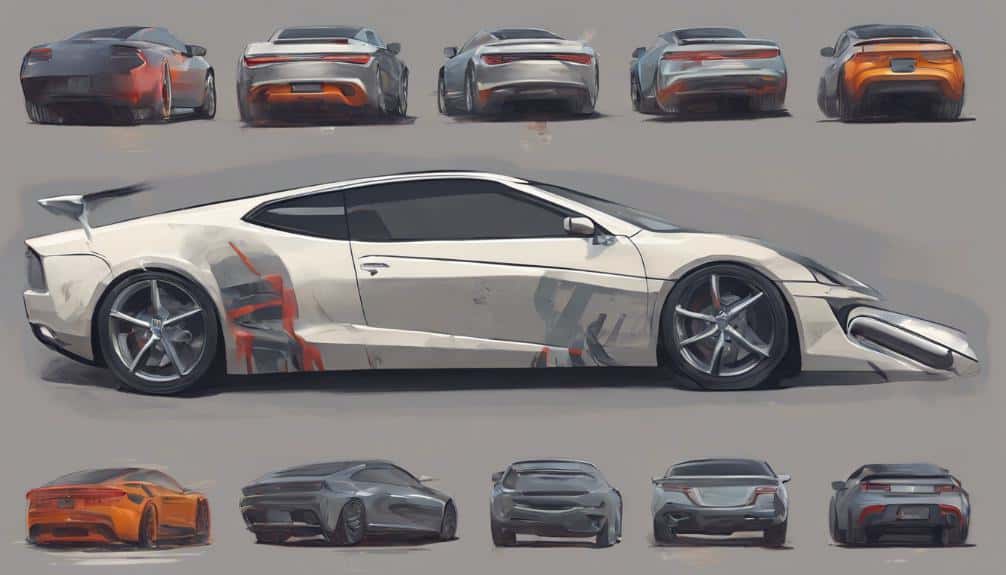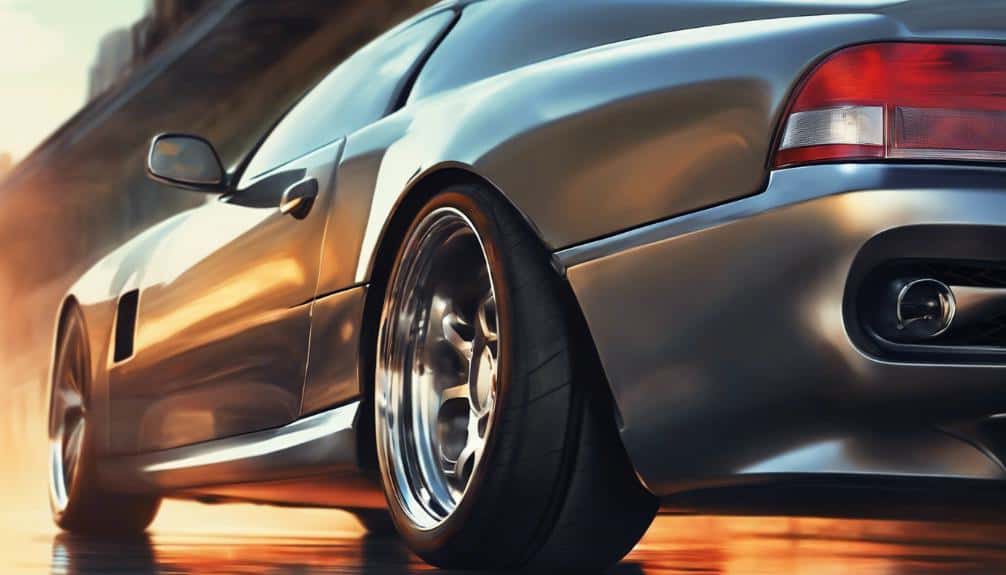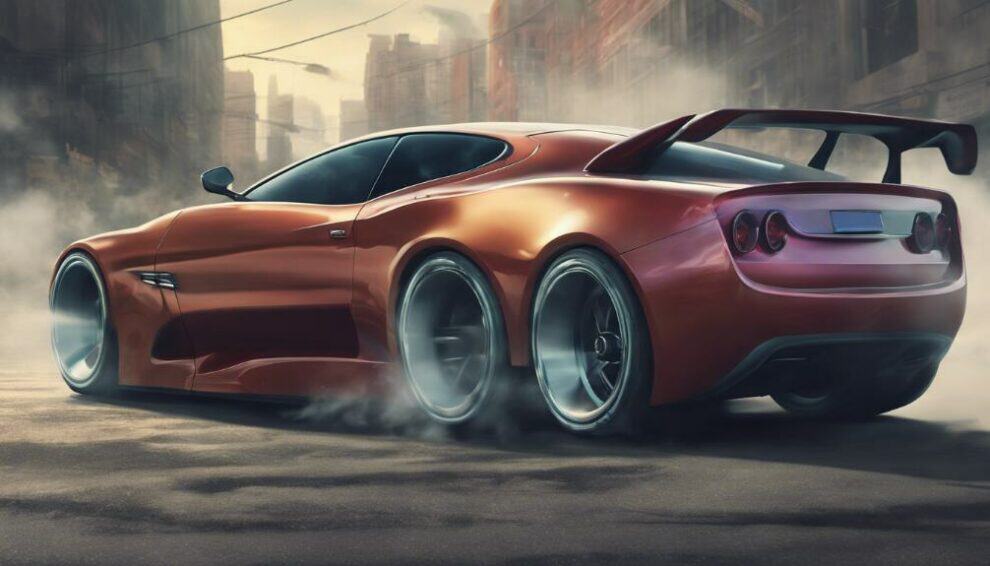When you rev your car’s engine, the powerful roar that emanates from the exhaust is more than just noise—it’s a statement.
Have you ever considered how something as seemingly simple as exhaust tips can influence the way your vehicle sounds?
The design of these tips can greatly impact the overall auditory experience, from the deep rumble to the high-pitched scream.
So, next time you start your engine, pay attention to the sound it produces; you might be surprised by the role exhaust tips play in shaping your car’s distinctive roar.
Key Points
- Polished or chrome finish for louder engine roar.
- Larger diameter tips produce deeper sound.
- Triangular tips create aggressive note.
- Titanium tips offer deeper tone and lighter weight.
- Exhaust tip shape significantly impacts auditory experience.
Understanding Exhaust Tip Design Impact

When considering the impact of exhaust tip design on a car’s roar, the shape, size, and material are vital factors to analyze.
The finish options available for exhaust tips can affect the sound insulation properties of the car.
Opting for a polished or chrome finish can result in a louder and more aggressive engine roar, as these materials reflect sound waves more effectively.
Conversely, choosing a matte or ceramic finish can provide better sound insulation, resulting in a quieter engine noise.
Also, the shape and size of the exhaust tip can also influence the sound produced by the vehicle.
Larger diameter tips tend to produce a deeper and more resonant sound, while smaller tips can create a higher-pitched tone.
Furthermore, certain tip designs, such as those with baffles or resonators, can further modify the sound profile of the car.
Understanding how different finish options impact sound insulation is essential in selecting the right exhaust tip design to achieve the desired auditory experience for your vehicle.
The Role of Material in Sound
The choice of material greatly influences the tone and quality of the engine sound produced by exhaust tips. When considering material selection for your exhaust tips, keep in mind the following key points:
- Sound Quality: Stainless steel exhaust tips are known for producing a crisper and more aggressive sound, enhancing the overall auditory experience of your vehicle’s engine roar.
- Material Impact: Titanium exhaust tips offer a lighter weight alternative that can produce a deeper and more resonant exhaust note, bringing a unique sound performance to your car.
- Sound Performance: The selection between stainless steel and titanium exhaust tips can significantly impact the sound enhancement of your vehicle, allowing you to tailor the exhaust tone to your preferences while also considering factors like durability and corrosion resistance.
Consider these factors carefully when choosing the material for your exhaust tips to achieve the desired sound quality and performance for your vehicle.
Can a too lean engine cause changes in the sound of the car’s exhaust?
Yes, a too lean engine at idle can cause changes in the sound of the car’s exhaust. The code P2187 indicates a lean running condition at idle. When the engine is running lean, it can lead to a higher pitched or popping sound coming from the exhaust system.
Size Matters: Impact on Roar

Optimizing the size of exhaust tips plays a pivotal role in enhancing the intensity and volume of your car’s roar.
Larger exhaust tips have the ability to amplify the engine roar by facilitating more airflow and sound to pass through.
This increase in airflow dynamics can result in a more strong and pronounced exhaust note, especially enhancing the deep, bassy tones.
On the contrary, smaller exhaust tips may impede airflow, leading to a quieter or more subdued exhaust sound. The diameter of the exhaust tips directly impacts the overall intensity and volume of your car’s roar.
By selecting properly sized exhaust tips, you can optimize the sound output of your vehicle, ultimately enhancing the auditory experience for both the driver and bystanders.
Consider the impact of exhaust tip size as you aim for the desired roar enhancement in your car’s exhaust system.
Shaping Sound With Exhaust Tip Shape
Considering the impact of different shapes on exhaust tips, you can sculpt the engine sound of your car to achieve a desired tone and resonance.
Through acoustic engineering and aesthetics, the shape of the exhaust tip plays a significant role in defining the auditory experience of your vehicle.
When it comes to performance tuning and vehicle customization, the exhaust tip shape becomes a key element in manipulating the sound dynamics. Here’s how different shapes can influence the engine roar:
- Triangular or slash-cut tips create an aggressive and throaty exhaust note.
- Resonated tips feature chambers that refine sound waves, resulting in a smoother roar.
- Turn-up tips direct exhaust gases upward, potentially amplifying the volume and intensity of the exhaust sound.
Customizing Your Car’s Auditory Experience

Enhance your car’s auditory experience through personalized customization of exhaust tips. Sound customization plays an important role in defining the unique roar of your vehicle.
By selecting the right exhaust tip design, such as titanium over stainless steel, you can achieve a deeper and more resonant engine sound.
Opting for resonator tips allows you to enhance specific frequencies, creating a distinct auditory signature for your car.
Then, choosing the appropriate exhaust tip length can impact both the intensity and pitch of the engine noise, enabling you to tailor the sound to your preferences.
Customizing your exhaust tips offers a cost-effective method to modify the auditory feedback of your vehicle without the need for extensive alterations to the entire exhaust system.
Take advantage of these customization options to elevate your driving experience through auditory enhancement.
As an Amazon Associate we earn from qualifying purchases.










